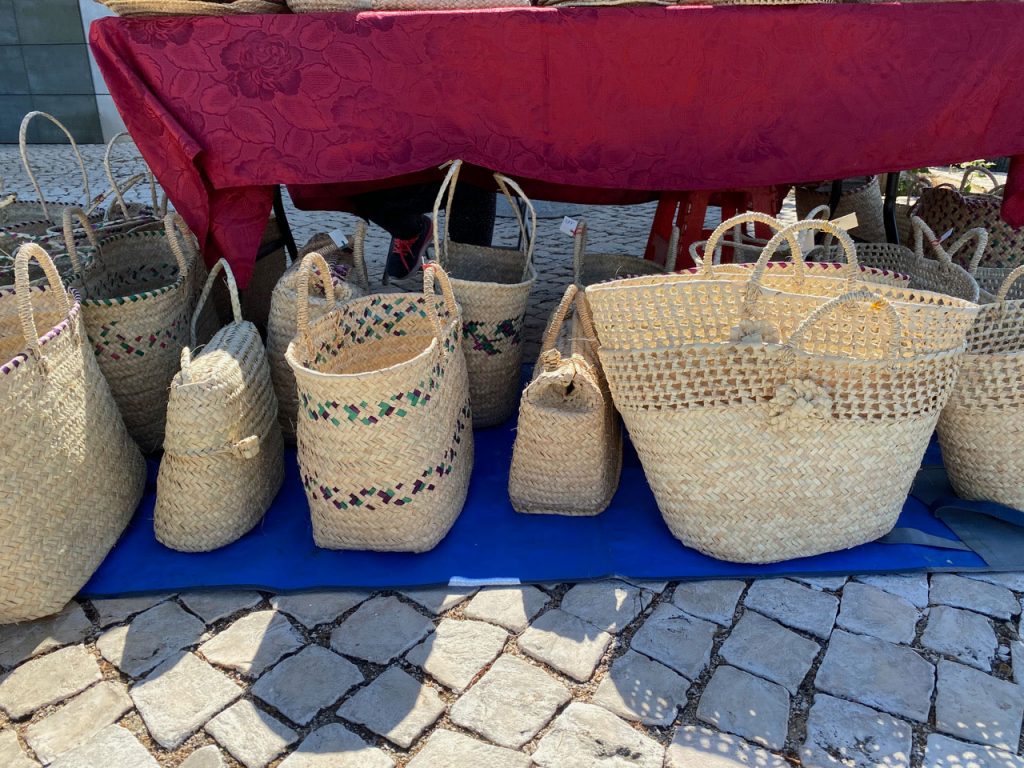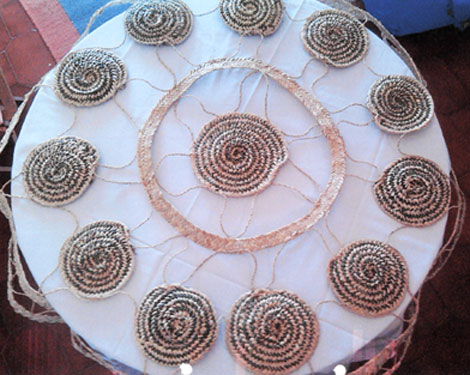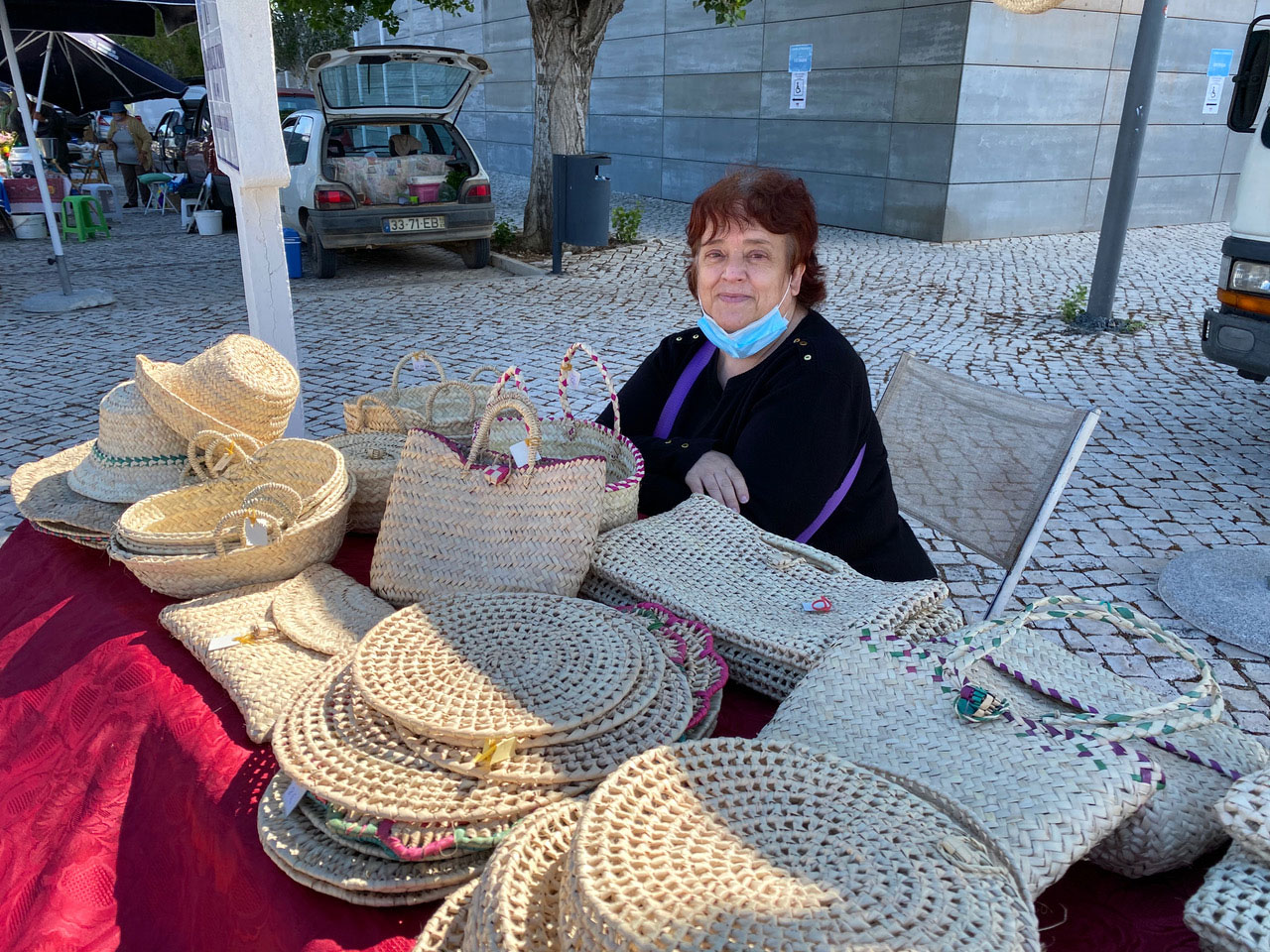Cristina Candeias is doing all she can to keep the ancient tradition of basket-making alive in the Algarve. She can be seen every Saturday in the local farmers’ market in Lagos selling her wares. On her table are a variety of bags, baskets, mats, hats – all made using dried leaves of a wild palm that grows right here in the Algarve.
The age-old practice of utilising the Palmeira Anã (Chamaerops humilis) used to be widespread. The woven baskets were used for transporting almonds, carobs and figs, and the large mats were perfect for drying produce in the open air. Household utensils and fishing gear were often made in the same way. The techniques were passed on from generation to generation, but the skill is slowly disappearing, to the concern of many.
54-year-old local resident, Cristina, stumbled upon the craft almost by accident. She left school early and gained her first employment at a supermarket, followed by a string of similar jobs. During a period of unemployment, she enrolled on a year-long course at the Institute of Work and Professional Training. “For me, it was just a diversion and I never thought it would lead to anything,” Cristina comments, “But a local councillor visited a session and noticed my work. She suggested I should start selling my goods at the market in Lagos and that’s how it began!”
Is she able to earn her living making baskets? “No, it is a part-time occupation, but it is one I love,” she says. Her main job is as an educational assistant at a primary school, having completed another professional training course. Her basket making is done in her spare time and it’s engrossing: “I start a piece and don’t want to stop until I am satisfied. Seeing the final product gives me such great pleasure.”


Cristina’s winning entry at the Lisbon International Fair
As Catarina only has a small backyard, she is unable to dry leaves herself. They are picked between June and September and then dried for about two weeks in the sun, attaining the characteristic yellow colour. “I tried once, but disaster struck when it rained and spoiled them,” Catarina says,” Now I buy them already dried from the only supply in Loulé.”
With time, Catarina’s expertise grew. In 2013, she was selected as one of the artisans to represent the Algarve at the International Lisbon Fair and gained first prize. At the time, a press release by the Institute of Work and Professional Training thanked the local artisans who “with their professionalism and creativity contributed to the appreciation of regional handicrafts. We hope that the recognition obtained will be a stimulus for all who are dedicated to these arts in the region.”
Catarina is certainly doing her bit by continuing her sterling work. She is a member of the Associação de Artesāos Barlavento and takes part in regular fairs. As she would like the skills to be passed on, she has offered workshops to people who are interested including a local school.
Unfortunately, there isn’t much take up. She wishes more could be done to support traditional crafts at different levels. Keen to acquire new skills herself, she has learned how to cross stitch and does weaving on a small loom she has bought. “I am having a go at doing Tapetes de Arraiolos (embroidered Persian-inspired wool rugs, traditionally made in the town of Arraiolos),” she enthuses. “I’d love to have a space in Lagos with a large loom and opportunity to teach traditional crafts.” A great way to bring together people from different communities to share their knowledge and at the same time preserve local culture and heritage.
Instead of buying cheap pre-fabricated products available in shops, I will certainly opt for items done with such love and attention at the next craft fair.













